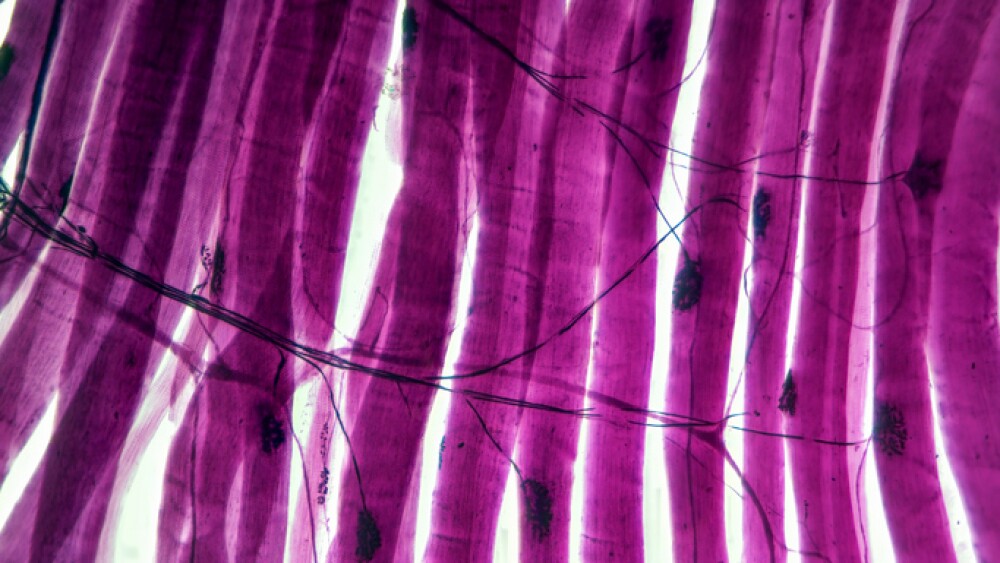Incendia Therapeutics, a precision oncology company discovering and developing a novel class of therapies that reprogram the tumor microenvironment (TME), today announced that it will have three poster presentations at the American Association for Cancer Research (AACR) Annual Meeting 2024, taking place April 5-10, 2024 in San Diego, California.
“We look forward to presenting these posters at AACR, which highlight our work to characterize immune exclusion in the TME,” said Laura Dillon, PhD, Vice President of Translational Medicine & Bioinformatics at Incendia Therapeutics. “The data continue to validate that Discoidin Domain Receptor 1 (DDR1), the target of Incendia’s PRTH-101 program that is currently in the clinic, is highly correlated with immune exclusion in the tumor microenvironment across epithelial tumors. Additionally, they demonstrate the power of applying H&E-based biomarkers, driven by machine learning, to better interrogate the TME. We look forward to further exploring the potential of this technology, combined with our novel class of anti-cancer therapies, to better treat cancer patients by targeting the tumor microenvironment.”
Presentation details for AACR 2024 are as follows:
Title: Discoidin Domain Receptor 1 (DDR1) expression is associated with degree of immune exclusion across epithelial tumors
Abstract Number: 2916 / 24
Presenting Author: Laura Dillon, Ph.D., Vice President of Translational Medicine & Bioinformatics at Incendia Therapeutics
Session: The Tumor Microenvironment as a Drug Target
Date and Time: Monday, April 8 from 1:30 - 5:00 PM PDT (4:30 – 8:00 PM EDT)
Key Highlights:
DDR1 mRNA and protein expression levels are correlated with immune exclusion of lymphocytes, CD8+ T cells, and CD45+ immune cells across epithelial tumor types (R: 0.31-0.56, adjusted p values: 0.04-0.07). While the degree of the correlation varied by indication and immune cell type considered, pancreatic cancer exhibited the strongest correlation between the lymphocyte-based Immune Exclusion Scores (IES) and DDR1 mRNA and protein expression (R: 0.48-0.54, adjusted p values: 0.04-0.07). This work provides additional insight into the role of DDR1 in human cancers and has utility for selecting indications and stratifying patients for DDR1-targeted therapies.
Title: Machine learning-based identification of H&E-derived morphologic features associated with CD8+ T cell immune exclusion
Abstract Number: 7392 / 20
Presenting Author: Yanchao Wang, Ph.D., Data Scientist at Incendia Therapeutics
Session: Artificial Intelligence and Machine/Deep Learning 4
Date and Time: Wednesday, April 10 from 9:00 AM - 12:30 PM PDT (12:00 PM – 3:30 PM EDT)
Key Highlights:
Morphologic features derived from H&E images can be effective predictors of CD8-defined immune exclusion, providing an option for patient stratification by immune phenotype using widely available H&E images. We developed an Ens-L1-SVM model that identified 6 H&E features predictive of CD8-defined immune phenotypes. CD8-based immune phenotypes were classified by the Ens-L1-SVM model with an estimated accuracy of 97% using only the H&E-based features as input.
Details on Incendia’s poster which is a collaboration with Alpenglow Biosciences:
Title: 3D spatial quantification of lymphocyte infiltration and collagen features in the tumor microenvironment using a novel assay: 3D I/O Pro™
Abstract Number: 2309 / 20
Presenting Author: Bonnie Phillips, Ph.D., Director, Commercial Development at Alpenglow Biosciences
Session: Liquid Biopsy and Precision Oncology
Date and Time: Monday, April 8 from 9:00 AM - 12:30 PM PDT (12:00 PM – 3:30 PM EDT)
Key Highlights:
An end-to-end 3D spatial biology workflow, Alpenglow’s 3D I/O Pro™, was applied to colorectal cancer (CRC) tissues stained with nuclear and general protein fluorescent dyes to quantify lymphocyte density in tumor parenchyma and stroma and analyze collagen features, including orientation, within 3D regions of interest in the TME. The ratio of stromal to parenchymal lymphocytes (lymphocyte infiltration ratio) varied from 1.4 up to 9.1 in 3D volumes and 1 to 25 in 2D virtual sections taken throughout all 5 CRC samples. Qualitatively, areas with perpendicular collagen had more lymphocyte infiltration into the tumor parenchyma than areas with parallel collagen orientation. This work highlights how the 3D I/O Pro™ workflow can characterize tumors based on complex spatial relationships within the tumor microenvironment, and could have broad applicability in research and development of novel cancer therapies that target tumor fibrosis or other features of the TME.
About Incendia Therapeutics
Incendia Therapeutics is discovering and developing a novel class of experimental therapeutics that reprogram the tumor microenvironment (TME). Incendia’s platform is based on rigorous, groundbreaking research involving spatial characterization of the tumor microenvironment, multi-omics data integration, and extensive preclinical testing. The Company’s most advanced experimental molecule, PRTH-101, is in a Phase 1 clinical trial for the treatment of patients with advanced solid tumors. For more information visit incendia.com and LinkedIn.
View source version on businesswire.com: https://www.businesswire.com/news/home/20240405134702/en/
Source: Incendia Therapeutics





